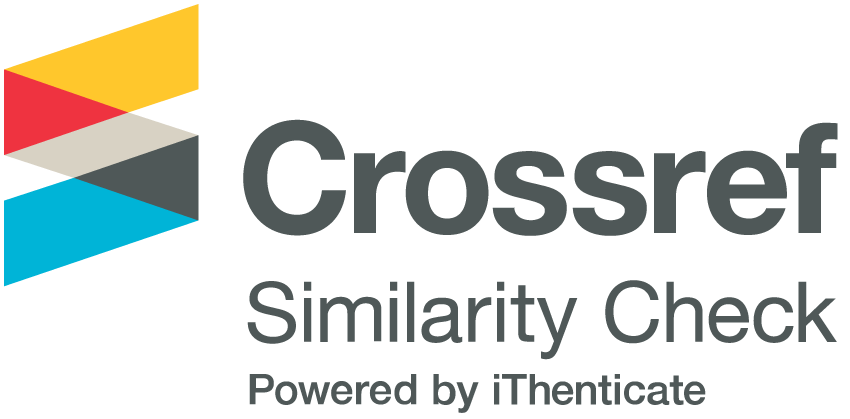Caring for People at Risk of Suicide in the Andalusian Health Service: A Qualitative Study of the Institutionalisation Process
DOI:
https://doi.org/10.54790/rccs.6Keywords:
health service, medical records, referral and consultation, family caregivers, patient care, suicide attemptedAbstract
Suicide continues to be the main external cause of death in Spain. Andalusia is the region with the highest number of suicides in the country. It is important to address its prevention. Here we describe how people who have attempted suicide access and are treated by the Andalusian Health Service. A qualitative study was conducted exploring public health care and its assessment. Data were collected through in-depth interviews with health professionals, patients, family members and relatives. This search was complemented with ethnographic information, all of which was explored following a combined strategy of analysis in line with the grounded theory assumptions. The results reveal setbacks in access to the health system, and stigmatised representations among professionals. At the same time, limitations due to lack of training and uncertainties in risk management were identified. Finally, strong difficulties were found among family members and patients, as they face stigmatisation and taboos that lead to profound vulnerability, especially in areas with fewer resources. All of this hinders early detection and reduces the capacity for prevention.
Downloads
Metrics
References
Augoustinos, M. y Walker, I. (2001). Social Cognition. An integrated introduction. SAGE.
Bajaj, P., Borreani, E., Ghosh, P., Methuen, C., Patel, M. y Crawford, M. J. (2008). Screening for suicidal thoughts in primary care: The views of patients and general practitioners. Mental Health in Family Medicine, 5(4), 229-235.
Basaluzzo Tamborini, S., Benito Riesco, O., Calvo Azpeitia, M., Cantarero Villanueva, M., Cerezo Camacho, I., Corredera Guillén, M. Á., González Almendros, E. M., López Narbona, M., Perea Baena, José Manuel, Pérez Costillas, L., Rodríguez Marín, E. M., Rueda López, F., Ruiz Ramos, M. y Zafra Jiménez, R. (2010). Recomendaciones sobre la detección, prevención e intervención de la conducta suicida. Servicio Andaluz de Salud.
Berger, P. L. y Luckmann, T. (2003). La construcción social de la realidad. Amorrortu.
Chishti, P., Stone, D. H., Corcoran, P., Williamson, E. y Petridou, E. (2003). Suicide mortality in the European Union. European Journal of Public Health, 13(2), 108-114. https://doi.org/10.1093/eurpub/13.2.108
Clark, S. E. y Goldney, R. D. (2008). The impact of suicide on relatives and friends. En Hawton y Heeringen (Eds.), The International Handbook of Suicide and Attempted Suicide (pp. 467-484). Wiley & Sons, Ltd. https://doi.org/10.1002/9780470698976.ch26
Córdoba-Doña, J. A., San Sebastián, M., Escolar-Pujolar, A., Martínez-Faure, J. E. y Gustafsson, P. E. (2014). Economic crisis and suicidal behaviour: The role of unemployment, sex and age in Andalusia, Southern Spain. International Journal for Equity in Health, 13(1). https://doi.org/10.1186/1475-9276-13-55
Del Pino López, R. (2013). II Plan Integral de Salud Mental de Andalucía 2008-2012 (E. Gómez de Lara, Ed.). Junta de Andalucía. Consejería de Salud.
Diraya (s. f.). Servicio Andaluz de Salud. https://www.sspa.juntadeandalucia.es/servicioandaluzdesalud/profesionales/sistemas-de-informacion/diraya
Durkheim, É. (2012). El suicidio: Estudio de sociología y otros textos complementarios. Miño y Dávila.
Euregenas (25 de abril de 2014). Euregenas en español. Euregenas. https://www.euregenas.eu/espanol
Fiske, S. (1998). Stereotyping, prejudice, and discrimination. En D. T. Gilbert (Ed.), The Handbook of Social Psychology. McGraw Hill.
Gensichen, J., Teising, A., König, J., Gerlach, F. M. y Petersen, J. J. (2010). Predictors of suicidal ideation in depressive primary care patients. Journal of Affective Disorders, 125(1-3), 124-127. https://doi.org/10.1016/j.jad.2009.12.008
Gili, M., García Campayo, J. y Roca, M. (2014). Crisis económica y salud mental. Informe SESPAS 2014. Gaceta Sanitaria, 28, 104-108. https://doi.org/10.1016/j.gaceta.2014.02.005
Giner, L. y Guija, J. A. (2014). Número de suicidios en España: Diferencias entre los datos del Instituto Nacional de Estadística y los aportados por los Institutos de Medicina Legal. Revista de Psiquiatría y Salud Mental, 7(3), 139-146. https://doi.org/10.1016/j.rpsm.2014.01.002
Goffman, E. (1963). Stigma: Notes on the Management of Spoiled Identity. Prentice Hall.
Goffman, E. (2001). Internados: Ensayos sobre la situación social de los enfermos mentales. Amorrortu.
González, R. A. y D’Ancona, M.ª A. C. (1997). Metodología Cuantitativa. Estrategias y técnicas de investigación social. Reis, 80, 240. https://doi.org/10.2307/40183928
Gotsens, M., Olmo, M. M., Rodríguez-Sanz, M., Martos, D., Espelt, A., Pérez, G., Pérez, K., Brugal, M. T., Barbería, E. y Borrell, C. (2011). Validación de la causa básica de defunción en las muertes que requieren intervención medicolegal. Revista Española de Salud Pública, 85, 163-174. https://doi.org/10.1590/S1135-57272011000200005
Guasch, Ó. (2002). Observación participante. CIS.
Hawton, K. y Van Heeringen, K. (2009). Suicide. The Lancet, 373, 9672, 1372-1381. https://doi.org/10.1016/S0140-6736(09)60372-X
Huizing, E., Gutiérrez Castillo, D., Pérez Costillas, L. y Moreno Küstner, B. (2016). Recomendaciones sobre la detección, prevención e intervención de la conducta suicida. Resumen para Atención Primaria. (A. Millán Carrasco, Ed.). Servicio Andaluz de Salud.
IECA (2017). Estadística de Condiciones de vida, consumo y bienestar social. Estado de salud de la población: Tasas de suicidio por provincia. Indicadores sociales en Andalucía. https://www.juntadeandalucia.es/institutodeestadisticaycartografia/indsoc/indicadores/791.htm
INE (2019). Defunciones según la Causa de Muerte, Año 2018. Principales causas de muerte por grupos de enfermedades 1.
INE (2021, enero). La salud mental en la pandemia: Lo que dicen las encuestas. Boletín Informativo del Instituto Nacional de Estadística, 1-6.
Jordan, J. R. y McIntosh, J. L. (2010). Grief after Suicide: Understanding the Consequences and Caring for the Survivors. Routledge. https://doi.org/10.4324/9780203886045
Krippendorff, K. (1990). Metodología de análisis de contenido. Teoría y práctica. Paidós.
Lee, R. M. y Fielding, N. G. (1991). Computing for qualitative research: Options, problems and potential. En N. G. Fielding y R. M. Lee (Eds.), Using Computers in Qualitative Research (pp. 1-14). Sage Publications.
Link, B. G. y Phelan, J. C. (2001). Conceptualizing Stigma. Annual Review of Sociology, 27(1), 363-385. https://doi.org/10.1146/annurev.soc.27.1.363
Luoma, J. B., Martin, C. E. y Pearson, J. L. (2002). Contact with mental health and primary care providers before suicide: A review of the evidence. American Journal of Psychiatry, 159(6), 909-916. https://doi.org/10.1176/appi.ajp.159.6.909
Miret, M., Nuevo, R., Morant, C., Sainz-Cortón, E., Jiménez-Arriero, M. Á., López-Ibor, J. J., Reneses, B., Saiz-Ruiz, J., Baca-García, E. y Ayuso-Mateos, J. L. (2010). Calidad de los informes médicos sobre personas que han intentado suicidarse. Revista de Psiquiatría y Salud Mental, 3(1), 13-18. https://doi.org/10.1016/S1888-9891(10)70003-3
Muñoz-Sánchez, J. L., Sánchez-Gómez, M. C., Martín-Cilleros, M. V., Parra-Vidales, E., De Leo, D. y Franco-Martín, M. A. (2018). Addressing suicide risk according to different healthcare professionals in Spain: A qualitative study. International Journal of Environmental Research and Public Health, 15(10), 1-17. https://doi.org/10.3390/ijerph15102117
Niederkrotenthaler, T., Voracek, M., Herberth, A., Till, B., Strauss, M., Etzersdorfer, E., Eisenwort, B. y Sonneck, G. (2010). Role of media reports in completed and prevented suicide: Werther v. Papageno effects. British Journal of Psychiatry, 197(3), 234-243. https://doi.org/10.1192/bjp.bp.109.074633
OMS (2000). Prevención del Suicidio. Un instrumento para médicos generalistas. Oms, 1-19.
OMS (2021, junio 17). Suicidio. Datos y Cifras. Organización Mundial de la Salud. https://www.who.int/es/news-room/fact-sheets/detail/suicide
OPS (2018). Manual de prácticas para el establecimiento y mantenimiento de sistemas de vigilancia de intentos de suicidio y autoagresiones. Organización Panamericana de la Salud. https://iris.paho.org/handle/10665.2/49120
Oquendo, M. A. y Mann, J. J. (2008). Suicidal Behavior: A Developmental Perspective. Psychiatr Clin North Am, 31(2), xiii-xvi. https://doi.org/10.1016/j.psc.2008.03.001
Pickett, K. E. y Wilkinson, R. G. (2010). Inequality: An underacknowledged source of mental illness and distress. British Journal of Psychiatry, 197(6), 426-428. https://doi.org/10.1192/bjp.bp.109.072066
Pirkis, J., Shin, S., Mres, A., Dwyer, J., Spittal, M. J., Delpozo-Banos, M., John, A., Arya, V., Analuisa-Aguilar, P., Appleby, L., Arensman, E., Bantjes, J., Baran, A., Bertolote, J. M., Borges, G., Brečić, P., Caine, E., Castelpietra, G., Chang, S.-S., … Spittal, M. J. (2021). Suicide trends in the early months of the COVID-19 pandemic: An interrupted time-series analysis of preliminary data from 21 countries. Articles Lancet Psychiatry, 8, 579-588. https://doi.org/10.1016/S2215-0366(21)00091-2
Rueda López, F. (2010). Guía sobre la prevención del suicidio para personas con ideación suicida y familiares. Servicio Andaluz de Salud. https://web.sas.junta-andalucia.es/servicioandaluzdesalud/publicaciones/guia-sobre-la-prevencion-del-suicidio-para-personas-con-ideacion-suicida-y-familiares-anexo-la
Sáiz, P. A. y Bobes, J. (2014). Suicide prevention in Spain: An uncovered clinical need. Revista de Psiquiatría y Salud Mental, 7(1), 1-4. https://doi.org/10.1016/j.rpsm.2014.01.003
Sánchez-Muros, P.-S. y Jiménez-Rodrigo, M.-L. (2021). Digital Media and Youth Suicide: Analysis of Media Reporting on «Blue Whale» Case. Communication & Society, 34(3), 117-133. https://doi.org/10.15581/003.34.3.117-133
Saunders, K. E.; Hawton, K.; Fortune, S. y Farrell, S. (2012). Attitudes and knowledge of clinical staff regarding people who self-harm: A systematic review. J. Affect. Disord, 139, 205-2016. https://doi.org/10.1016/j.jad.2011.08.024
Seminario de fundamentos clásicos de la sociología. (1999). Centenario de El suicidio, de Émile Durkheim. Papers. Revista de Sociologia, 57, 39-72. https://doi.org/10.5565/rev/papers/v57n0.1966
Strauss, A. y Corbin, J. (2002). Bases de la investigación cualitativa: Técnicas y procedimientos para desarrollar la teoría fundamentada. Universidad de Antioquia.
The Economist (24 de abril de 2021). «Surprisingly, suicide has become rarer during the pandemic». https://www.economist.com/graphic-detail/2021/04/24/surprisingly-suicide-has-become-rarer-during-the-pandemic
Triañes Pego, Y., Senra-Rivero, C., Seoane Pesqueira, G., Álvarez Ariza, M., De las Heras, E. y Atienza Merino, G. (2014). Satisfacción y utilidad percibidas por pacientes y familiares acerca de la información sobre prevención de suicidio. Revista de Calidad Asistencial, 29(1), 36-42. https://doi.org/10.1016/j.cali.2013.09.004
WHO (2014). Preventing suicide: A resource for non-fatal suicidal behaviour case registration. World Health Organization. https://apps.who.int/iris/handle/10665/112852
WHO (2019). Suicide in the world: global health estimates. World Health Organisation. https://apps.who.int/iris/handle/10665/326948
Wray, M., Colen, C. y Pescosolido, B. (2011). The Sociology of Suicide. Annual Review of Sociology, 37, 505-528. https://doi.org/10.1146/annurev-soc-081309-150058
Downloads
Published
How to Cite
Issue
Section
License
Copyright (c) 2022 Patricia S. Sánchez-Muros Lozano

This work is licensed under a Creative Commons Attribution-NonCommercial-ShareAlike 4.0 International License.










